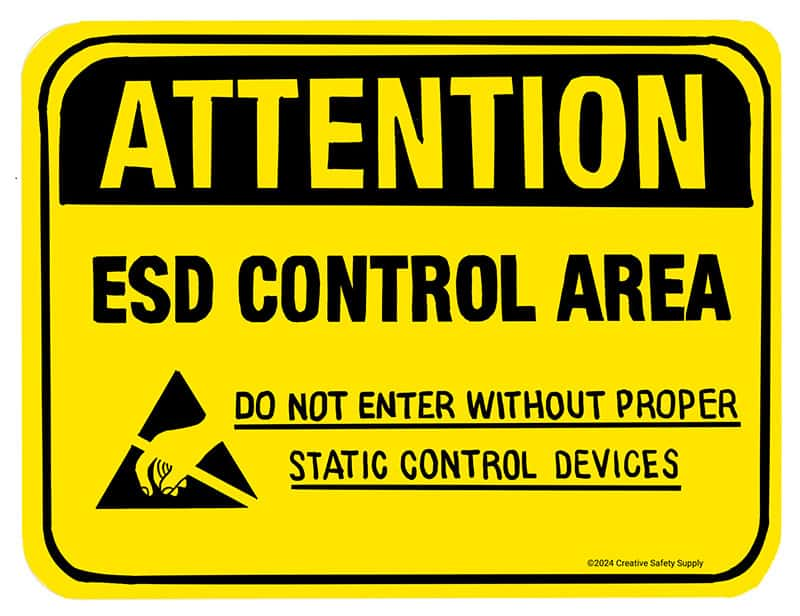
ESD is an acronym for electrostatic discharge. This discharge is the rapid transfer of static between two different objects. Although ESD doesn’t typically cause harm to the human body—you might only experience it as a small, surprising shock—it can cause extensive damage to electrical equipment and sensitive instruments. This damage may either be permanent and causes the device to malfunction (known as a catastrophic failure), or it may occur on a smaller scale that’d difficult to detect before the device is sent out for service (known as latent defect).

When you’re inside your house, an office, or other normal environments, there are multiple ESD events occurring throughout the day, you just don’t feel or see them. Examples include the rapid transfer of static that happens when you touch metal after walking on a carpet, or when you unwind a roll of tape. In a high tech manufacturing environment, however, ESD is regarded as a hidden enemy that causes electronic circuitry to melt or burn. It’s especially important to prevent latent defects, as this type of damage is more costly to repair and makes a negative impact on a company’s reputation.
To reduce and limit ESD events, it’s necessary to implement ESD control measures. A very common practice is for workers to ground the devices they handle or ground themselves before they conduct work. There are anti-static wrist straps, anti-static mats, ground bracelets, static shielding bags, and more products available to help safely direct electricity into the ground. In areas of your facility where ESD may be a risk, you can put up ESD signs to remind workers to be cautious around any sensitive equipment. There are also often ESD control areas, in which the need to control ESD is especially highlighted. By increasing ESD awareness, you can reduce the likelihood of electrostatic damage happening to devices, which helps to reduce waste and keeps your company’s reputation intact.
Additional ESD facts:
- ESD stands for electrostatic discharge, which is a sudden and momentary flow of electric current between two electrically charged objects in contact or close proximity. Source: https://en.wikipedia.org/wiki/Electrostatic_discharge
- ESD can cause damage to electronic components, such as integrated circuits, transistors, diodes, and resistors, by creating insulation breakdown, thermal overstress, metallization failure, or material migration. Source: https://resources.system-analysis.cadence.com/blog/msa2022-the-mechanisms-and-effects-of-esd
- ESD can be generated by various mechanisms, such as triboelectrification, conduction, and inductive charging. Triboelectrification is the most common cause of ESD, which occurs when two materials are rubbed together and then separated, creating an imbalance of electric charges. Source: https://www.esda.org/esd-overview/esd-fundamentals/part-1-an-introduction-to-esd/
- ESD can be prevented or reduced by using proper grounding, shielding, ionization, and humidity control techniques. Grounding provides a path for excess charges to flow to the earth, shielding prevents charges from reaching sensitive devices, ionization neutralizes charges in the air, and humidity control reduces the resistance of the air and the materials. Source: https://www.esda.org/esd-overview/esd-fundamentals/part-1-an-introduction-to-esd/
- ESD has a long history of causing problems in various industries, such as munitions, explosives, petrochemical, pharmaceutical, and electronics. For example, in the 1800s, people used static control procedures and devices to prevent ESD ignition of gunpowder stores. Source: https://gokimco.com/blogs/esd-equipment/15-surprising-esd-static-electricity-facts
Similar Questions
- What is ESD?
- What are electrical safety risks in the office?
- How does electrical shock occur and how can it be prevented?
- What does NEMA stand for?
- What are electrical safety devices?
- What are supplies I should have on hand to prevent or respond to electrical hazards?
- What is the need for isolation in electrical equipment?
- What are the basics of electrical safety?
- What Levels of Voltage are Lethal?

